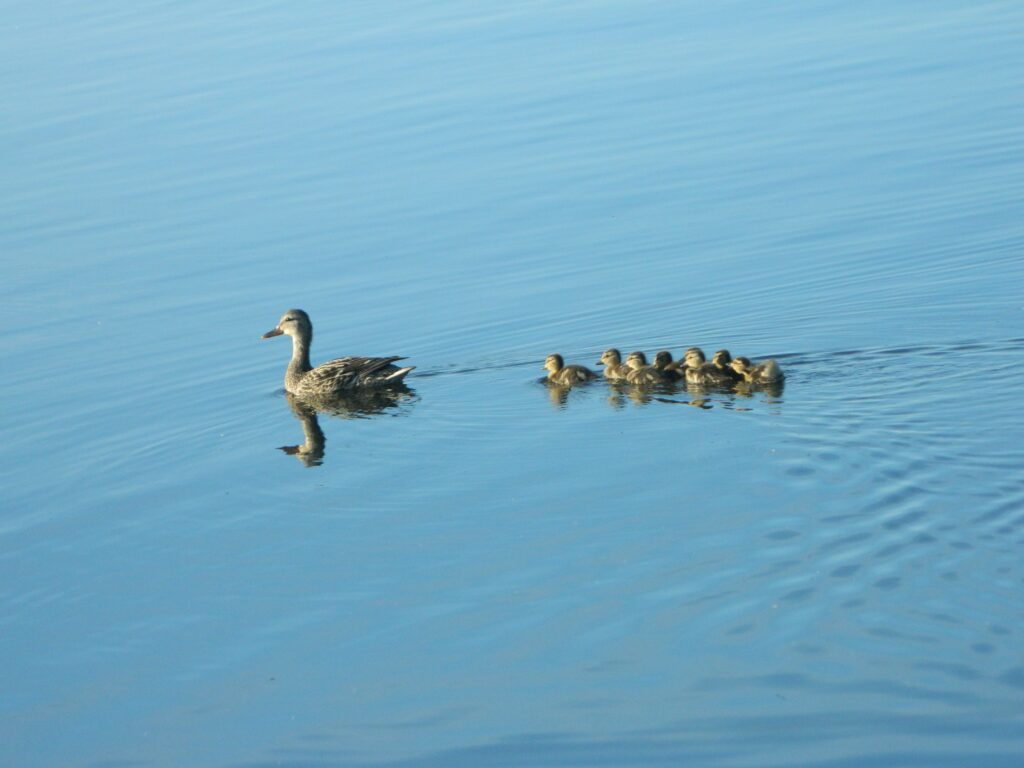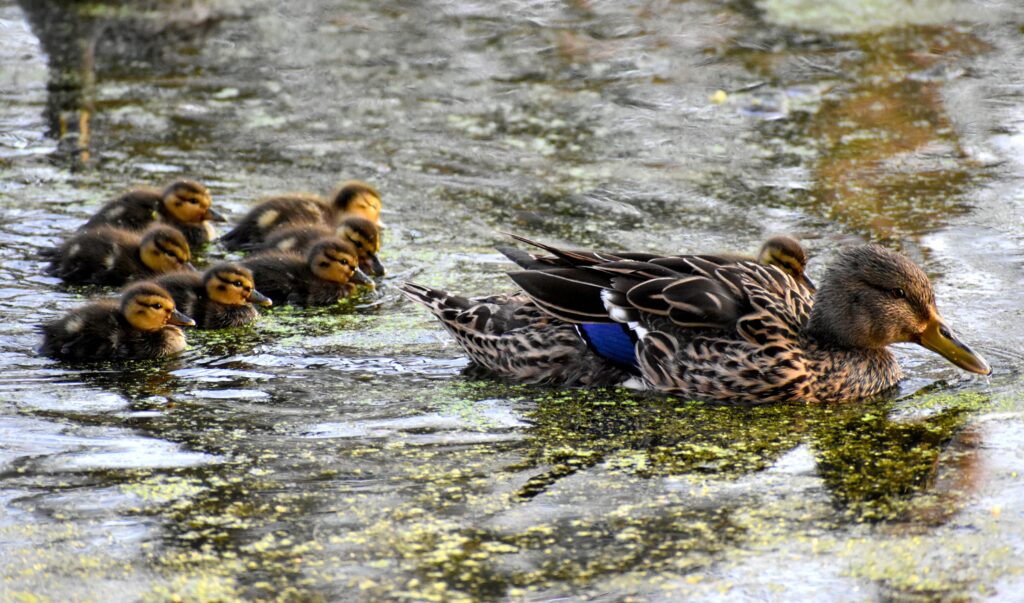Curiosities, do you know why ducklings swim behind their mother in a row?

Don’t scenes of ducklings swimming in a row behind their mother fill you with tenderness? This position that these birds seek over the waters of a river, lake or pond is used, in fact, to refer to similar moments that happen in human life. Because human beings too, especially when we are little, place ourselves behind an adult figure that protects and guides us. However, in addition to these purposes, in ducks and other waterfowl there is another reason that defines the movement they make in a group from the moment they begin to swim.
According to a group of researchers, everything is a matter of energy, but not using it, but rather saving it. By swimming in a straight line behind their mother, baby ducks use the waves that the mother’s body generates to propel themselves. Previous studies in fish to date have shown that fish could save up to 62.8% of metabolic effort by swimming behind a larger fish. Likewise, studies on the metabolism of small ducks had already confirmed that they saved energy by swimming behind a larger duck.
Naval architect Zhiming Yuan, in research, managed to solve the riddle using computer simulations of waterfowl waves. These images allowed us to observe in detail and calculate that a duckling that sails behind its mother receives help from it. Thus, when we see a group of baby ducks running through the water behind their mother, we can already understand it not only as a tender act but also as a reflection of the knowledge of these animals.

When arranged in an almost perfect line, each duckling leaves a trail of movement for the momentum of the one to follow. What’s more, like siblings, the ducklings share their mother’s waves with each other. Thus, when they are placed in a line, each duckling leaves a trail of movement for the impulse of the one that follows it.
When a duckling swims alone, it raises waves in its wake, and it must expend energy against them to go in the direction they want and not be swept away, that wave of drag resists the movement of the duckling. Instead, the researchers calculated, positioned behind the mother, the ducklings experience 158% less drag from waves than when swimming alone, which translates into a great maternal push that not only reduces all the force they would have to exert the little ones, but offers them enough to go, practically led by her.
In addition, according to the study, their walks in a row can shape the primal instincts of ducks. Since, remembering the benefit that following someone adult offers them, they tend to unconsciously follow anything they see moving when they spend a period on land. Whatever it is, of course, they seek comfort.





Responses